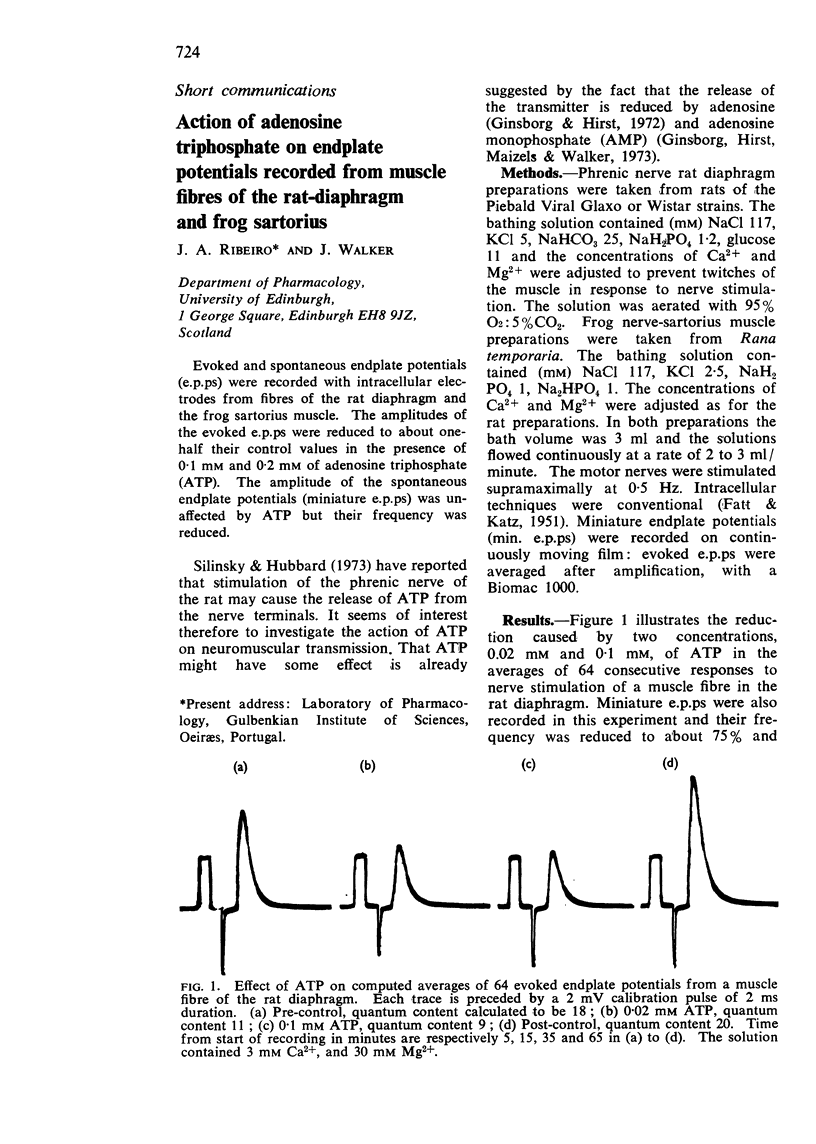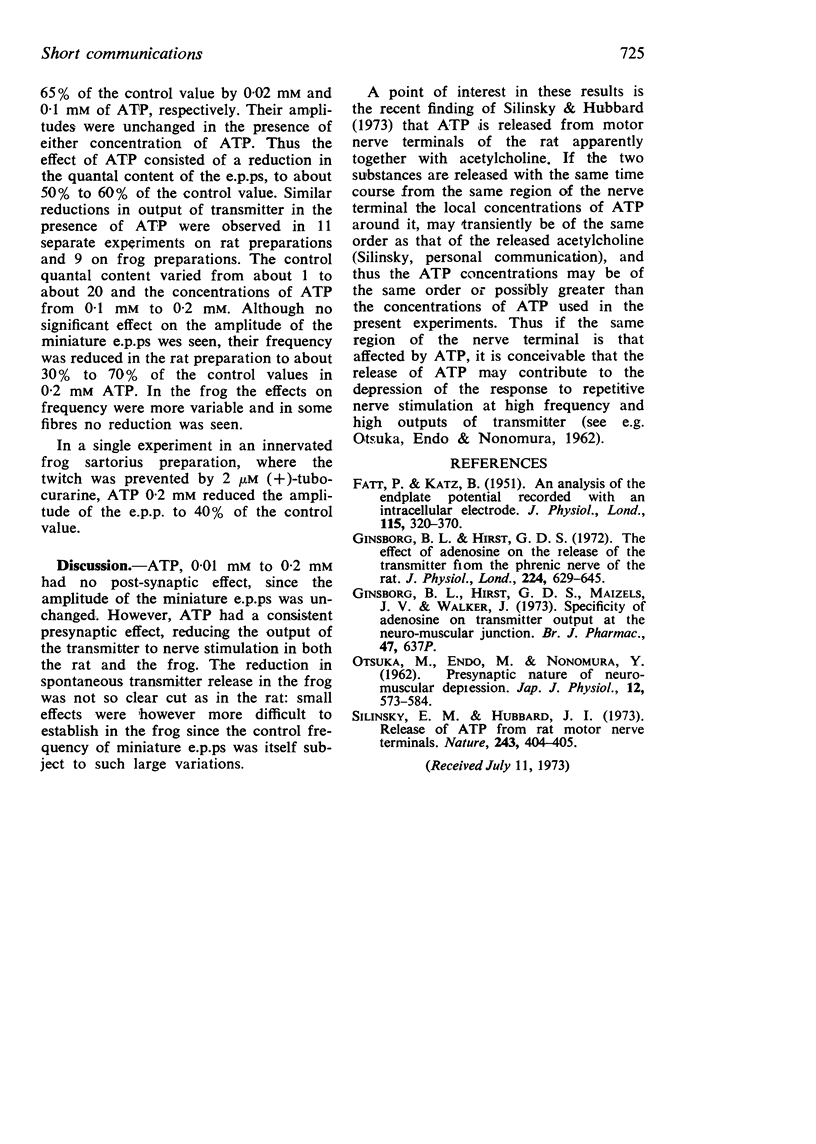Abstract
Evoked and spontaneous endplate potentials (e.p.ps) were recorded with intracellular electrodes from fibres of the rat diaphragm and the frog sartorius muscle. The amplitudes of the evoked e.p.ps were reduced to about one-half their control values in the presence of 0·1 mm and 0·2 mm of adenosine triphosphate (ATP). The amplitude of the spontaneous endplate potentials (miniature e.p.ps) was unaffected by ATP but their frequency was reduced.
Full text
PDF

Selected References
These references are in PubMed. This may not be the complete list of references from this article.
- FATT P., KATZ B. An analysis of the end-plate potential recorded with an intracellular electrode. J Physiol. 1951 Nov 28;115(3):320–370. doi: 10.1113/jphysiol.1951.sp004675. [DOI] [PMC free article] [PubMed] [Google Scholar]
- Ginsborg B. L., Hirst G. D., Maizels J. V., Walker J. Specificity of adenosine on transmitter output at the neuromuscular junction. Br J Pharmacol. 1973 Mar;47(3):637P–637P. [PMC free article] [PubMed] [Google Scholar]
- Ginsborg B. L., Hirst G. D. The effect of adenosine on the release of the transmitter from the phrenic nerve of the rat. J Physiol. 1972 Aug;224(3):629–645. doi: 10.1113/jphysiol.1972.sp009916. [DOI] [PMC free article] [PubMed] [Google Scholar]
- OTSUKA M., ENDO M., NONOMURA Y. Presynaptic nature of neuromuscular depression. Jpn J Physiol. 1962 Dec 15;12:573–584. doi: 10.2170/jjphysiol.12.573. [DOI] [PubMed] [Google Scholar]
- Silinsky E. M., Hubbard J. I. Thermal synthesis of amino acids from a simulated primitive atmosphere. Nature. 1973 Jun 15;243(5407):404–405. doi: 10.1038/243404a0. [DOI] [PubMed] [Google Scholar]


